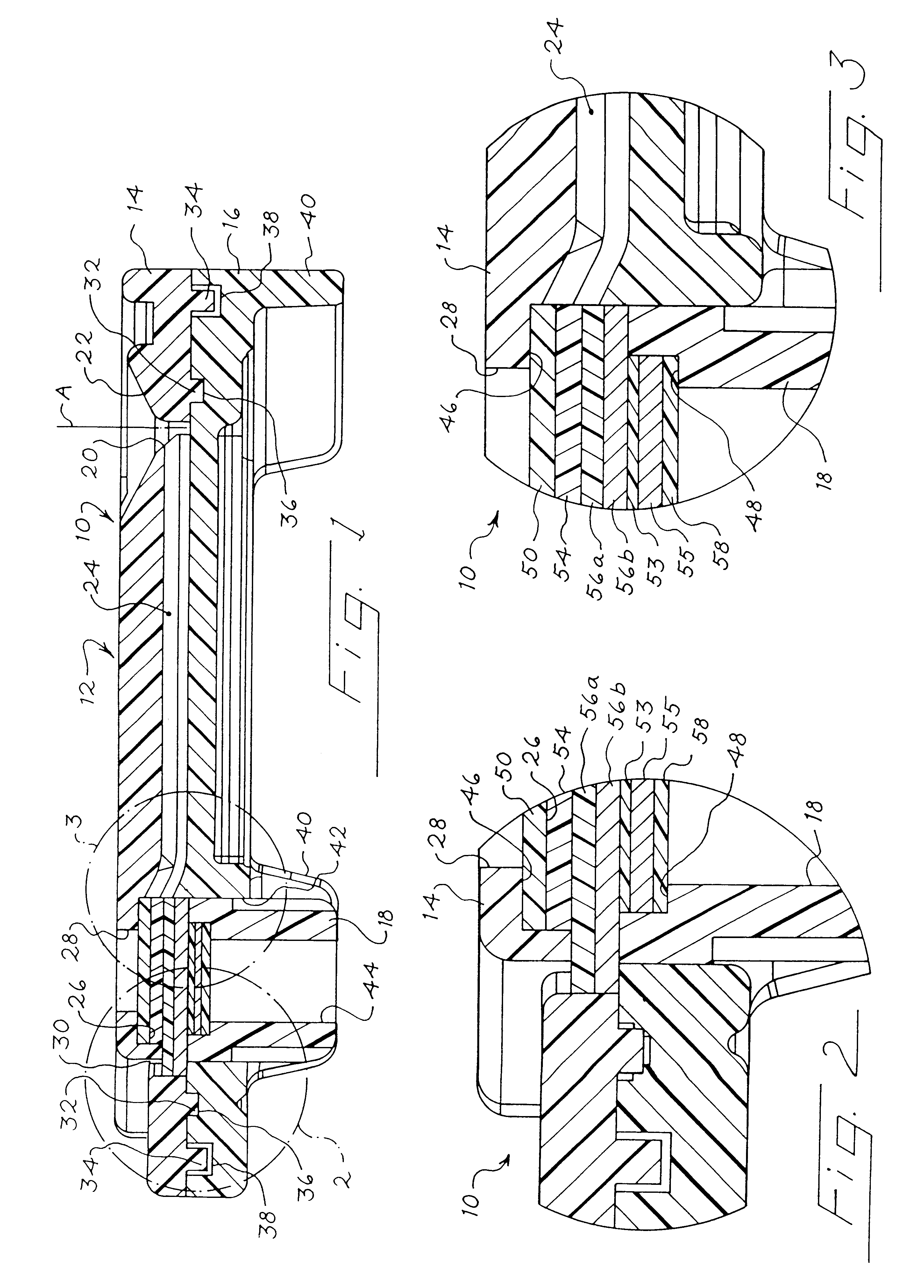Method for stabilizing aminotransferase activity in a biological fluid
a biological fluid and aminotransferase technology, applied in the direction of enzyme stabilization, transferases, instruments, etc., can solve the problem of relatively unstable activity of aminotransferase enzyme in the serum, and achieve the effect of facilitating blood collection
- Summary
- Abstract
- Description
- Claims
- Application Information
AI Technical Summary
Benefits of technology
Problems solved by technology
Method used
Image
Examples
example 1
Operation of the Serum Separator Device
FIGS. 1 through 21 show a device much like that from WO 99 / 57559 that can be used for collecting and drying a serum or plasma from a blood sample. As shown in FIG. 1, the device 10 includes a housing 12 that is made up of an upper part 14 (FIGS. 4-11), a lower part 16 (FIGS. 12-18), and a plug 18 (FIGS. 19-21).
As best shown in FIG. 1, the upper part 14 defines an external opening 20 centered within a recess 22. The external opening 20 is aligned with an axis A, and the opening 20 provides fluid communication between the exterior of the housing 12 and a channel 24. The channel 24 is oriented substantially transversely to the axis A in this embodiment. In other embodiments, the channel 24 can be oriented at other nonparallel angles with respect to the axis A. The channel 24 provides a fluid flow path from the external opening 20 to an internal compartment 26 that is laterally offset from the external opening 20. The upper part 14 defines first an...
example 2
Serum Stabilization
The serum was separated from whole blood in a serum separator device comprising a hydrophobic plastic, Porex x4588 (reference 54,58 in the above example); Hemasep.RTM. V (reference 56a in the above example); and SA1J017H99 (placed between the membranes 56b and 58 ) assembled as described in Example 1 above. In certain of the devices, the serum collection membrane was treated with solutions 1-7 described in Table 1.
The whole blood was applied to the device and allowed to separate. The dried serum spots were subsequently left to dry overnight and assayed for AST and ALT activity on the following day. The ALT and AST was determined as a function of time after collection as well as at various storage temperatures.
The AST / GOT assay employed for the determination of aminotransferase activity was obtained from Sigma Chemical Co. The reaction proceeds according to the following scheme:
L-Aspartate+2-Oxoglutarate.fwdarw.Oxalacetate+Glutamate Oxalacetate+NADH.fwdarw.L-Malate...
PUM
| Property | Measurement | Unit |
|---|---|---|
| temperature | aaaaa | aaaaa |
| storage temperature | aaaaa | aaaaa |
| storage temperature | aaaaa | aaaaa |
Abstract
Description
Claims
Application Information
 Login to View More
Login to View More - R&D
- Intellectual Property
- Life Sciences
- Materials
- Tech Scout
- Unparalleled Data Quality
- Higher Quality Content
- 60% Fewer Hallucinations
Browse by: Latest US Patents, China's latest patents, Technical Efficacy Thesaurus, Application Domain, Technology Topic, Popular Technical Reports.
© 2025 PatSnap. All rights reserved.Legal|Privacy policy|Modern Slavery Act Transparency Statement|Sitemap|About US| Contact US: help@patsnap.com



